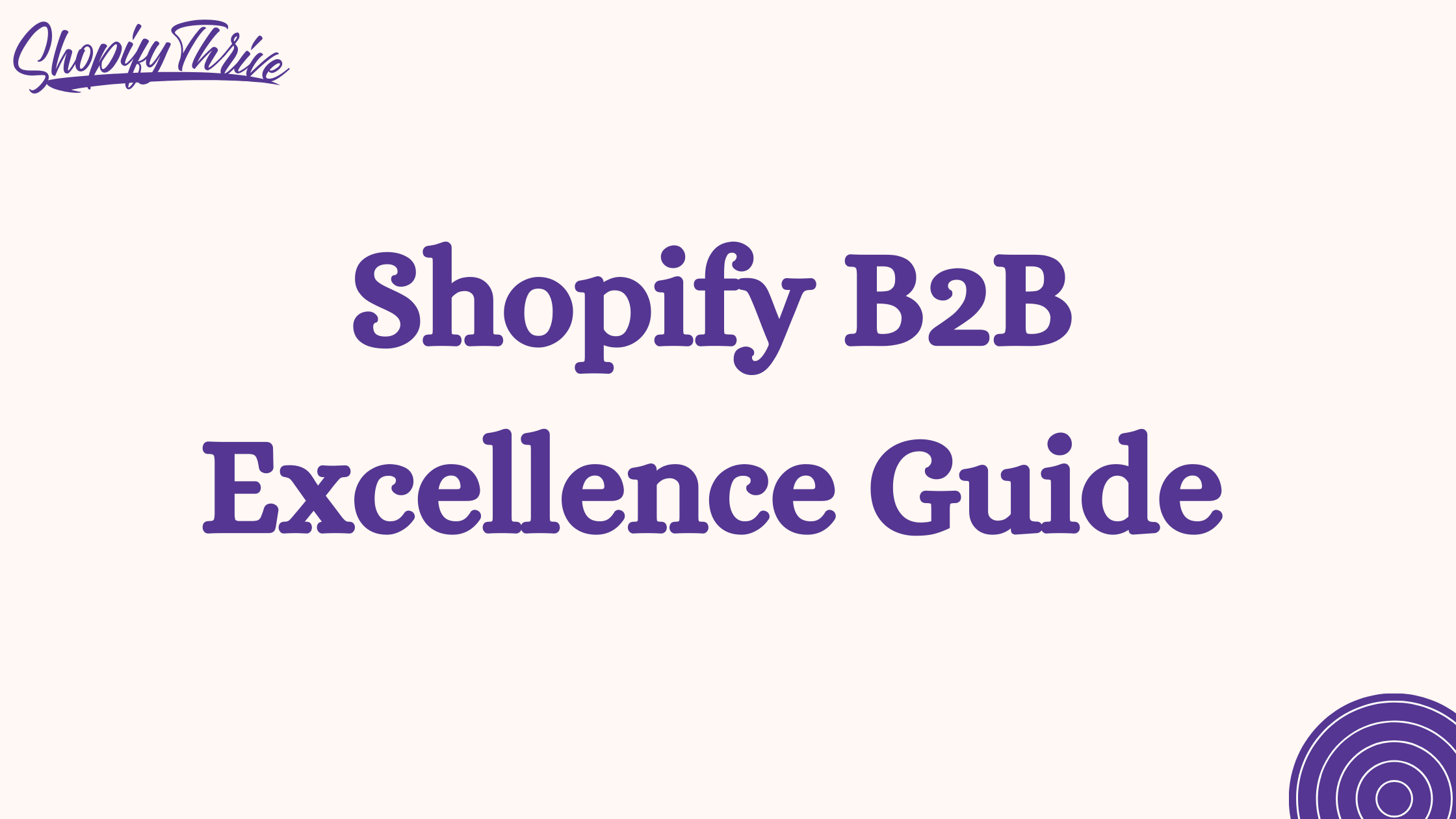
Noor
Shopify B2B Excellence Guide
- September 10, 2023
- , 6:06 pm
- , Shopify Tips
Introduction
In this comprehensive guide, we will uncover the immense capabilities of Shopify for B2B (Business-to-Business) transactions. Whether you are a seasoned B2B seller or just venturing into this domain, this detailed tutorial will equip you with the knowledge and strategies to leverage Shopify effectively for B2B purposes.
Shopify, renowned for its prowess in the world of e-commerce, isn’t limited to B2C (Business-to-Consumer) transactions. It can also be harnessed to facilitate seamless B2B sales. This guide will walk you through every facet of utilizing Shopify for B2B, from setup to optimization.
The MECE Framework for Shopify B2B
To ensure a comprehensive understanding of Shopify for B2B, we’ll adopt the MECE (Mutually Exclusive, Collectively Exhaustive) framework. This structured approach will break down the multifaceted topic into easily digestible sections:
1. Deciphering B2B Commerce
Before diving into the intricacies, it’s crucial to understand the fundamentals of B2B commerce. We’ll explore what B2B entails, its significance, and how it differs from B2C.
2. Setting Up Your B2B Store on Shopify
This section will guide you through the process of establishing a dedicated B2B store on the Shopify platform. We’ll cover essential tasks such as account setup, theme selection, and configuring B2B pricing and discounts.
3. Shopify Apps for B2B Enhancement
Shopify boasts a plethora of apps that can elevate the B2B experience. We’ll introduce you to various apps for managing B2B customer accounts, customizing the purchasing process, and optimizing order management.
4. Customer Management and User Roles
Efficient B2B customer management is pivotal. We’ll discuss strategies for managing B2B customer accounts, setting user-specific roles and permissions, and fostering lasting customer relationships.
5. B2B Pricing Strategies
Pricing strategies in the B2B realm differ from those in B2C. We’ll delve into B2B pricing strategies, including tiered pricing, quantity discounts, and contract-based pricing.
6. Order Processing and Bulk Sales
Streamlined order processing is essential for B2B operations. We’ll explore how to handle bulk orders, manage inventory, and optimize the order fulfillment process for B2B customers.
7. Legal and Compliance Considerations
B2B transactions often involve complex legal and compliance requirements. We’ll discuss topics such as contracts, tax regulations, and compliance with industry standards in the B2B space.
8. Marketing and Growth Strategies for B2B
Marketing in the B2B arena plays a significant role. We’ll provide insights into B2B marketing strategies tailored for Shopify and strategies for scaling your B2B operations.
Conclusion
Shopify’s versatility extends beyond B2C, making it a powerful platform for B2B sales. By following the steps outlined in each section of this guide, you’ll be well-equipped to harness the full potential of Shopify.
Remember, B2B commerce requires careful planning, tailored solutions, and a customer-centric approach. Embrace the MECE framework and embark on your journey to maximize Shopify’s capabilities for B2B success. Your B2B success story awaits!
If you enjoyed this blog post, make sure to check out some of our other useful Shopify tips here: Shopify Tips Archives | Shopify Thrive
Ready to transform and grow your shopify brand?
See why companies like Lash Artisan, Lust For Lashes, joemetry.co and more
launched their shopify Brand With ShopifyThrive.
